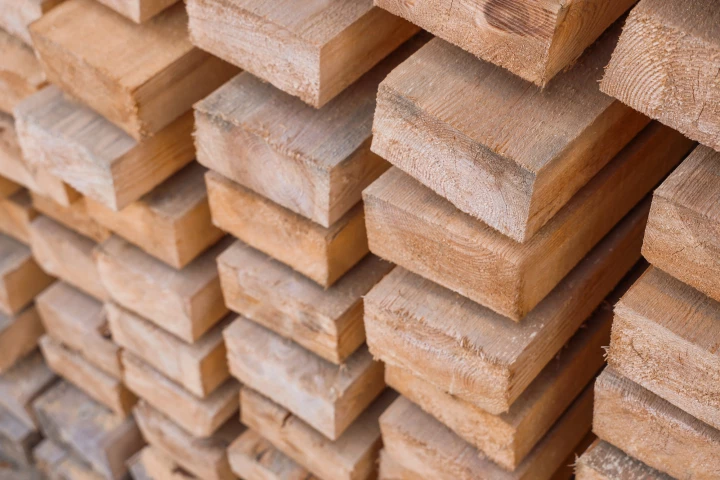Wood
-
Don't be fooled by that soft-looking down and pretty faces – woodpeckers are tough, tree-pounding beasts who simultaneous harden their whole bodies like a hammer and grunt as they drill away with force of up to 30 times their weight.
-
A Maryland-based startup is set to begin mass producing Superwood, which is made from regular timber using a densification process, and exhibits strength greater than that of steel.
-
Although lumber does show promise as a renewable alternative to structural materials such as steel, it still tends to be weaker than those substances. Scientists have now set about addressing that shortcoming, by strengthening wood with added iron.
-
Factory wood-cutting robots may be capable of fast and intricate carpentry tasks, but they're expensive – plus they put actual carpenters out of work. A new augmented reality system splits the difference, by guiding the hands of human carpenters.
-
While sustainably-grown wood can be an eco-friendly building material, its relatively low tensile strength limits its potential applications. That could soon change, however, thanks to a new self-densifying technique for creating super-strong wood.
-
Imagine a glow-in-the-dark designer desk, or wooden fence posts that guide you home with their eerie light. Scientists in Switzerland have developed a way to make glowing wood, with the help of a fungus.
-
A 3,775-year-old log discovery has lent credence to the idea of burying wood to sequester the carbon it contains. Known as a wood vault, the concept helps keep CO2 out of the atmosphere while allowing the soil to be used for crops and other purposes.
-
Vantablack, which is the world's darkest material, could be in for some competition. Canadian scientists have created a super-black substance that has the potential to be cheaper, hardier and easier to manufacture … and it's made out of wood.
-
Tulip trees have been around for millions of years, but a new analysis of their structure has revealed a previously unknown type of wood. The finding could explain why the trees are great at sequestering carbon and help our efforts to do the same.
-
Designed to represent the concept of a time machine, and built by a talented woodworking engineer, this extraordinary wooden vehicle is now turning heads as it whirrs and rattles through the streets of Vietnam.
-
Swedish sodium-ion developer Altris has identified a means of making the lithium-free batteries even more sustainable. Together with partner Stora Enso, it's adapting tree pulp-sourced carbon toward use as an anode material.
-
We don't usually want our furniture to be flammable, but this stool actually encourages it. Made from potatoes and sawdust, it's designed to be thrown in a fireplace for warmth once it reaches the end of its usefulness.
Load More











